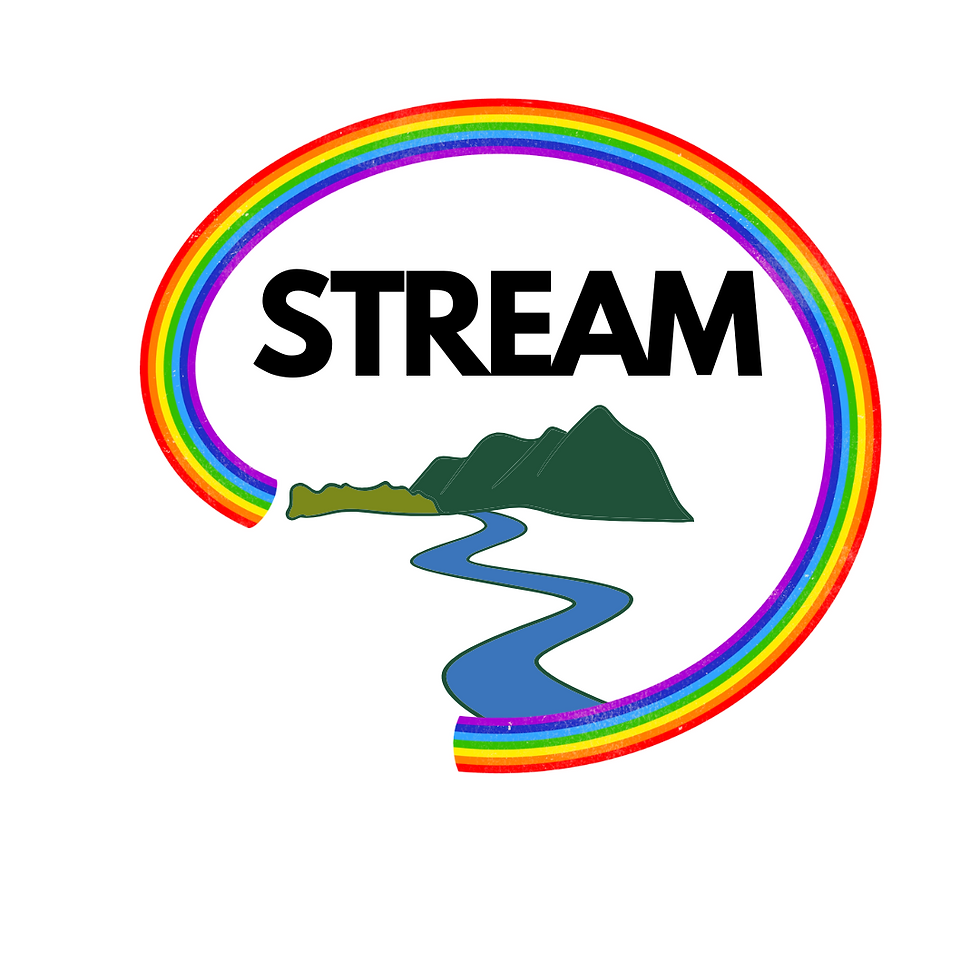STREAM Stories: A Case for Making Science Fun - an Op-Ed by Dre Presswood
- streamemerge
- Sep 16, 2024
- 4 min read
My journey into nature and environmental science started unexpectedly—and a little late. I didn’t go on my first hike until I was 18, and it wasn’t until I took part in an internship with local park rangers in Dubuque, Iowa, that my connection with the outdoors really began. Dubuque is a beautiful town, with its fascinating geology, rolling elevations, and rich history along the Mississippi River. That internship made such an impression on me that I changed my major from chemistry to environmental science, setting me on a path I hadn’t foreseen.

From there, my academic interests expanded. I was drawn into meteorology, where I conducted a meteorological experiment as part of my studies. When COVID-19 hit, it actually opened up a unique opportunity: Where I was able to simultaneously conduct my own undergraduate research project in hydrology. This was where my love for hydrology truly began. Working on that project, I realized that water science was not just a field of study for me—it was my passion.
After graduating, I moved to Colorado to do trail work. That experience deepened my appreciation for nature and the environment. Afterward, I joined Colorado Springs Utilities in their leak detection department. There, I was part of a team responsible for preventing the loss of hundreds of thousands of acre-feet of water from leaking underground due to pressurized, treated water pipes. We used local reports, stethoscopes, and water chemistry to locate and fix these leaks. Though I enjoyed the work, I found myself with even more questions about water systems. I knew I needed to continue my studies and explore hydrology in greater depth.
That’s when I found an opportunity at Georgia State University. Dr. Sarah Ledford, my soon-to-be advisor, had funding from the Department of Energy to research watershed dissolved oxygen dynamics and how land cover influences it. Intrigued by the research and craving the diversity of a large city, I moved to Atlanta, sight unseen.
My time in Atlanta was brief but transformative. Soon after arriving, I was accepted into the Society for Freshwater Science’s Emerge program, where I found a community of scientists who shared my interests. I attended numerous scientific conferences, both domestically and internationally, including one in Australia. Immediately after that conference, I completed an academic appointment at Oak Ridge National Laboratory, shadowing some of the top scientists in hydrology. This experience further solidified my commitment to pursuing a Ph.D. in hydrologic sciences.

One of the most unexpected highlights of my time in Atlanta was a chance meeting in Australia. While in Cairns, I met Keisha Tyson Johnson, a science teacher at M. Agnes Jones Elementary School in Atlanta, who was on her 20th anniversary trip. She was thrilled to meet a black hydrologist and insisted that I come to her classroom to teach the water cycle. Shortly after returning to the U.S., I made good on that promise. The day I spent teaching at M. Agnes Jones was nothing short of transformational. The students were completely engaged, and I realized the impact I made that day could be greater than any scientific paper I might write. From that moment on, I knew I had to use my unique position—not just as a hydrologist, but as a Black scientist in a field with limited representation—to engage my community, inspire young people, and show them the importance of environmental stewardship.
After finishing my master’s degree in Atlanta, I moved to Reno, Nevada, to begin the final chapter of my academic journey. Here, I study watershed nutrient dynamics and am exploring how to combine snow hydrology with my early love of meteorology. Throughout these experiences, I’ve built a large and diverse community of scientists. My academic journey has taught me that while high-level research is important, it’s just as crucial to advocate for and engage with the next generation of scientists who will face the challenge of combating climate change.
This is where HydroSciGuy comes in. I created HydroSciGuy, a science communication persona on TikTok, Instagram, and YouTube, to document my scientific work at the University of Nevada, Reno, and to show the world what freshwater scientists do. But it’s more than that. With HydroSciGuy, I want to normalize the image of a scientist who looks like me. I want to show that working outdoors, protecting the environment, and being a steward of the Earth are not only essential but accessible to everyone. By breaking down barriers and making science engaging and relatable, I hope to inspire a new generation of environmental stewards.

While the primary goal of HydroSciGuy is to engage and educate, it’s also about representation. I want to show young people, especially those from underrepresented communities, that they too can become scientists, that they can make a difference, and that the fight to protect our planet is one we can all take part in. Climate change is a daunting challenge, but by normalizing the role of scientists and showing the importance of environmental work, I believe we can build a future where protecting the Earth is a common goal—and a common experience—for all.





Comments